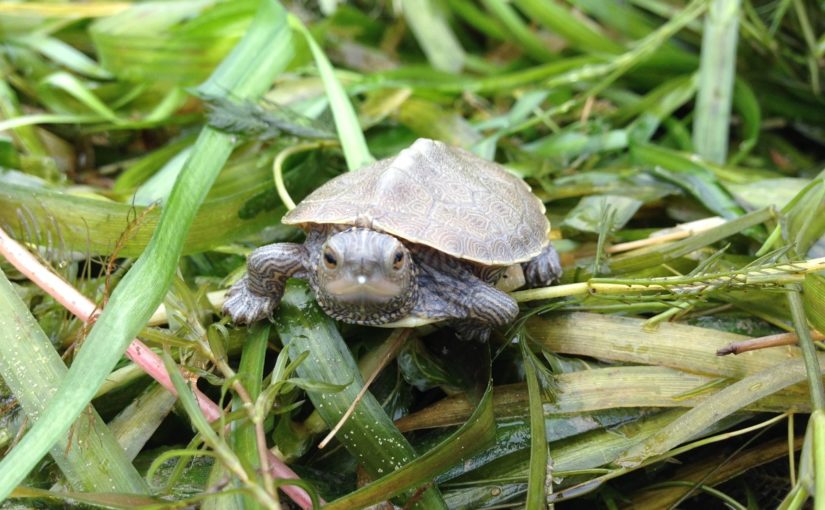Today’s post comes from Olivia Pomajba, a summer student at Rondeau Provincial Park.
A turtle hatchling making its way to water reminds us of the perilous journey we all face in life.
The world must seem incredibly vast to these centimetre-long hatchlings, and they face many challenges.
Nesting
Turtles begin laying their eggs in late May and early June, often migrating to construct their nest.
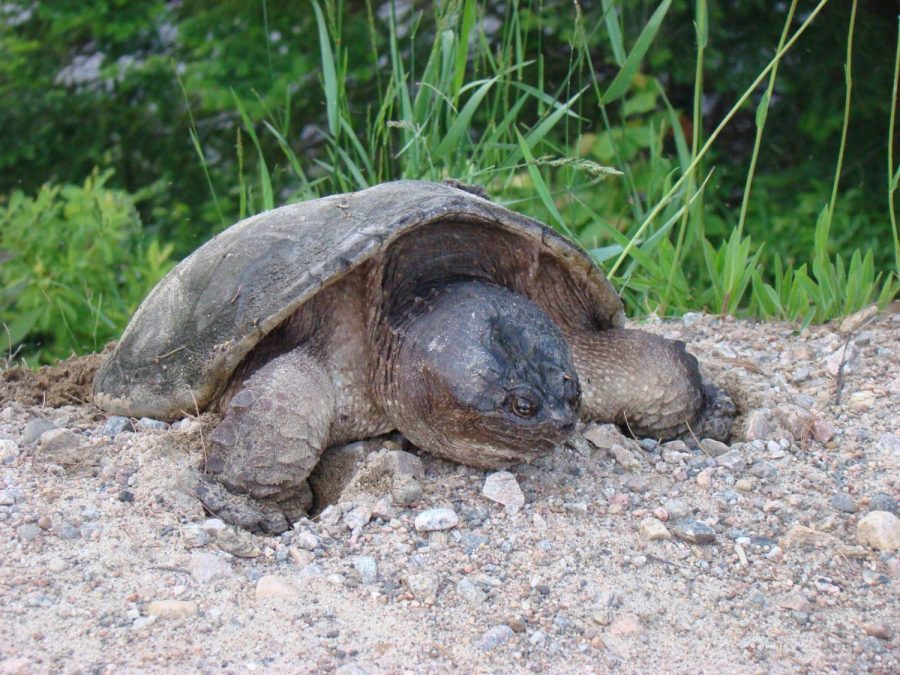
The silt and gravel on the sides of the road make for great nest conditions; it’s easy to dig and offers full sun to keep the nest warm.
But the risk of road mortality increases as turtles cross roads to lay their clutch of eggs.
Predation
The return journey the hatchlings make from the nest to the water is even more profound: they complete it alone.
After laying their eggs, turtles do not tend to their nest, nor do they care for their young.

As a result, hatchling turtles go through a period of extremely high mortality caused by predators and environmental stressors.
Within 24 hours of the turtle laying its eggs, the clutch emits a strong smell and leaves the nest vulnerable to predators.
Raccoons are a notorious for their taste for turtle eggs, but skunks and foxes are also known predators.
Incubation
Surviving eggs generally hatch in mid-August, but this varies based on weather conditions over the summer. For many species of turtle, temperature determines the sex of eggs.
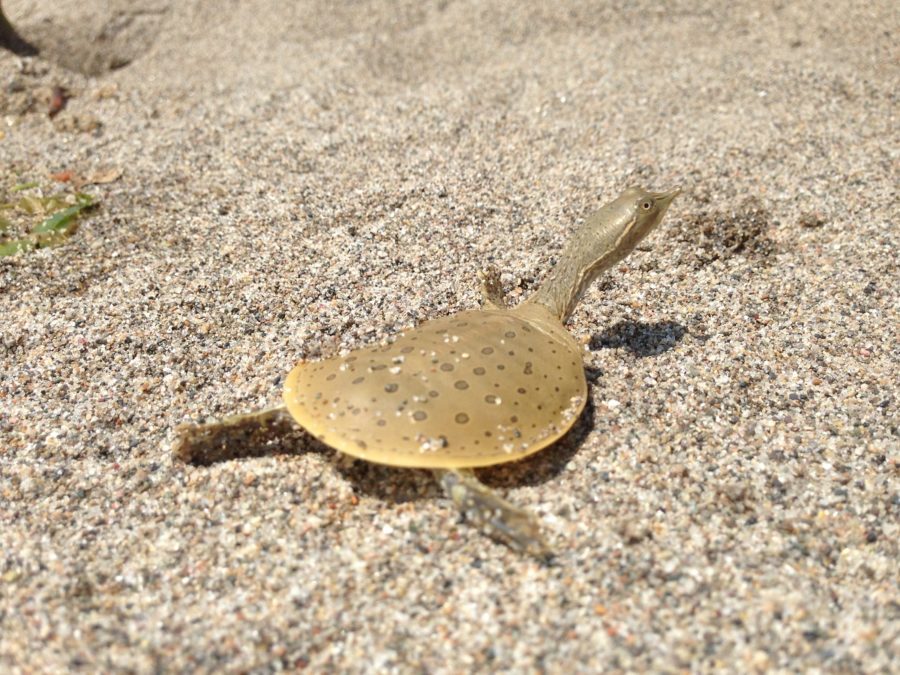
Lower temperatures result in male hatchlings, while a long, hot summer will result in more female turtles, which can help Ontario’s Species at Risk turtles repopulate.
Ontario Parks projects
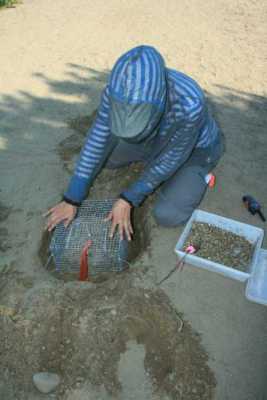
Ontario Parks hosts several important turtle research projects, like observation of Blandings and Wood Turtle hatchlings using radio telemetry.
Nest coverings in Ontario Parks have also proven effective in protecting clutches from predators.
Researchers have been using artificial nesting mounds in Algonquin Provincial Park, in an effort to reduce predation and hatchling mortality. They found that hatchling success was higher in artificial nests.
Presqu’ile Provincial Park has installed wildlife crossings at key crossing areas to reduce turtle road mortality. You can learn more about ecopassages in Ontario Parks here.
And, of course, park staff from all departments in Ontario Parks watch for emerging nestlings and help them through busy areas of the park.
Be a turtle hero!
Several of Ontario’s turtles are considered at risk. It’s estimated that less than 2% of turtle hatchlings survive into adulthood, so let’s help them out!
Report your sightings
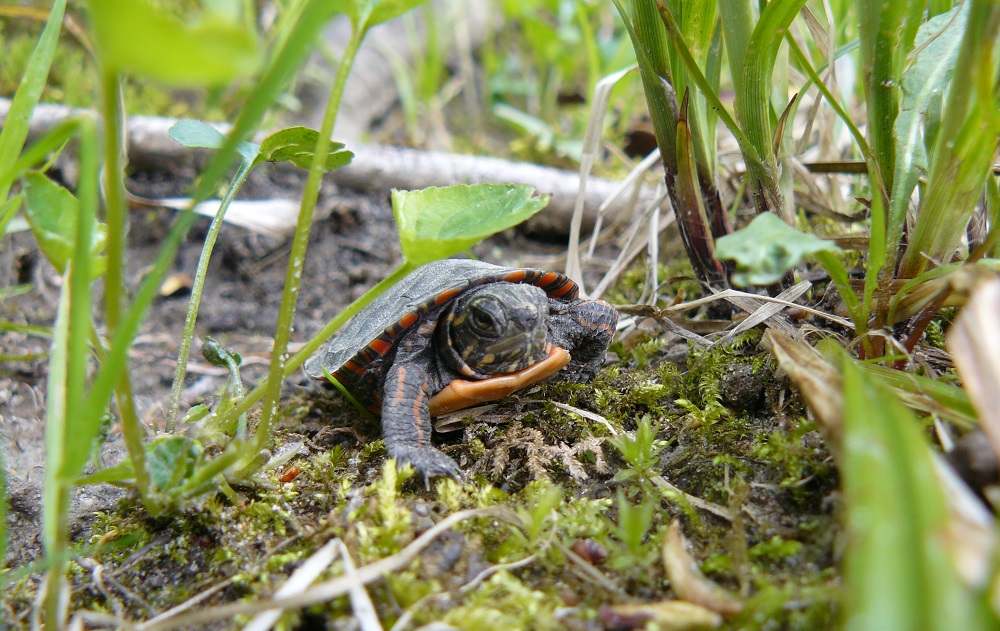
If you see a turtle hatchling in the wild, snap a quick picture and report your sighting on Ontario Parks’ iNaturalist project. Sightings like these can really help park staff and researchers protect turtles more effectively.
Be careful not to disturb the turtle when taking your picture.
Watch for turtles on the road
If you see a turtle on the road, you can help by assisting it across.

When helping turtles cross the road, make sure it’s safe to do so, and take the turtle in the direction it was headed. You should wash your hands afterwards, as turtles can carry salmonella.
Don’t feed the raccoons!
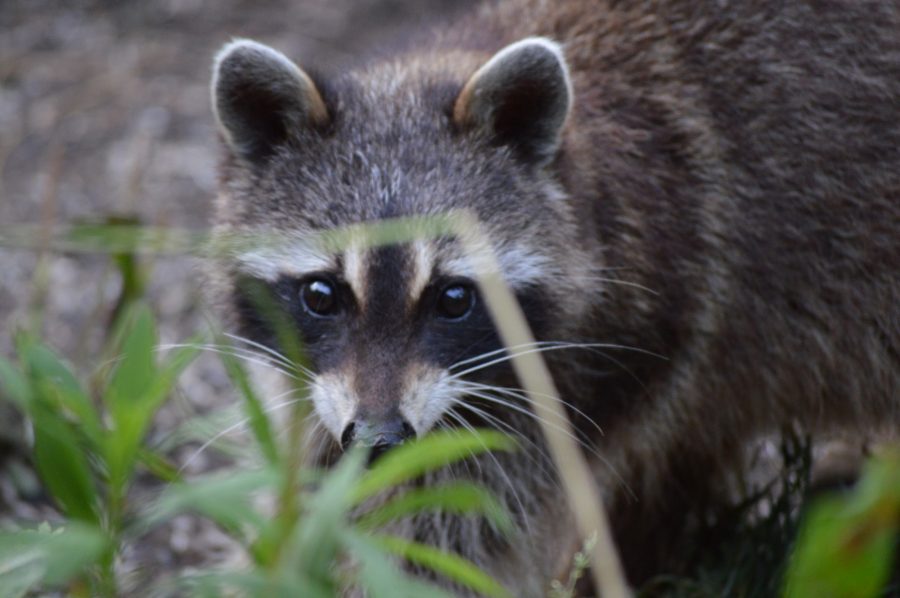
Raccoons are a predator to turtle nests and turtle hatchlings. When raccoons are fed by humans, their populations soar. The more raccoons there are in Ontario Parks, the more predators there are for turtle hatchlings.
